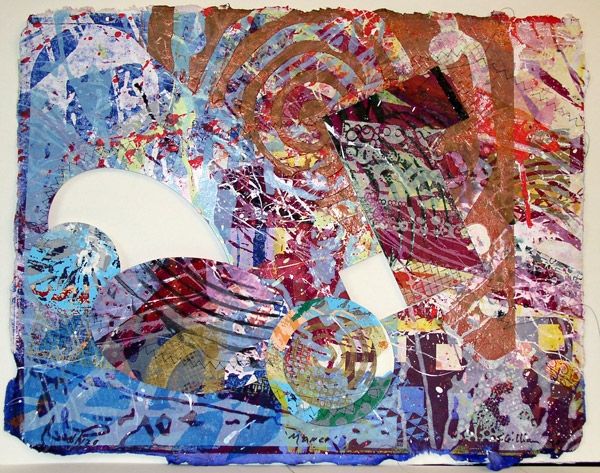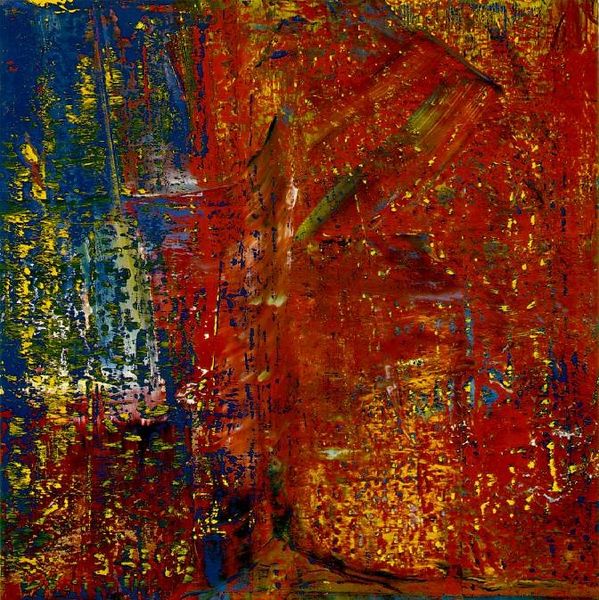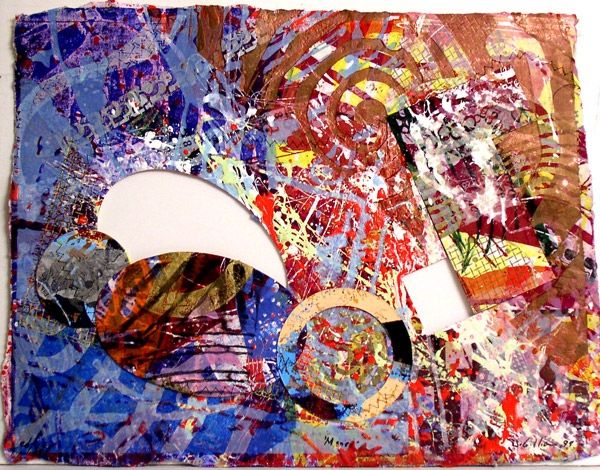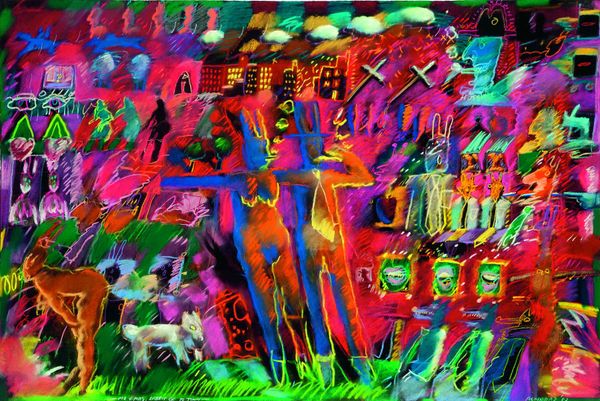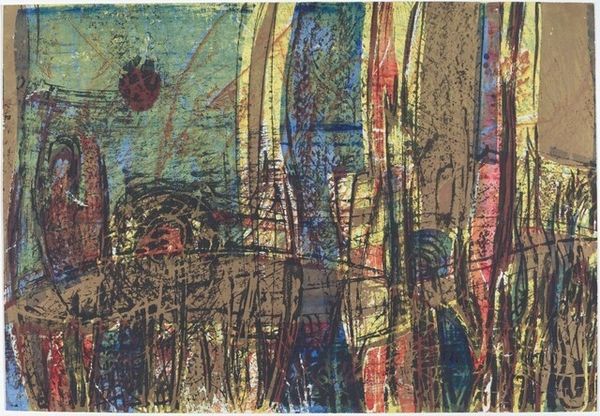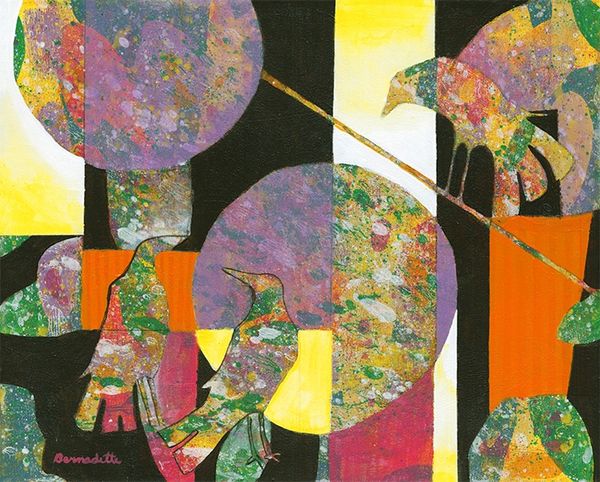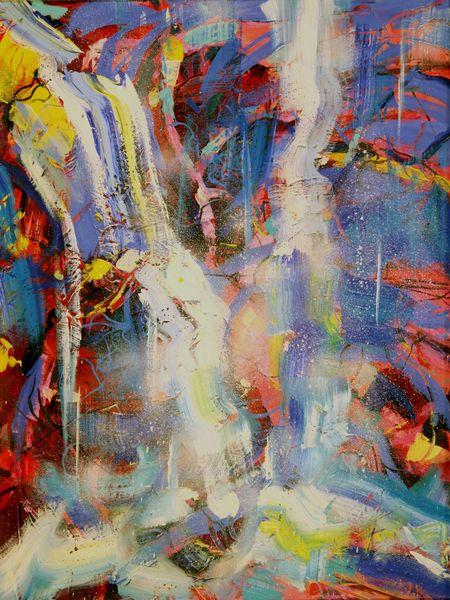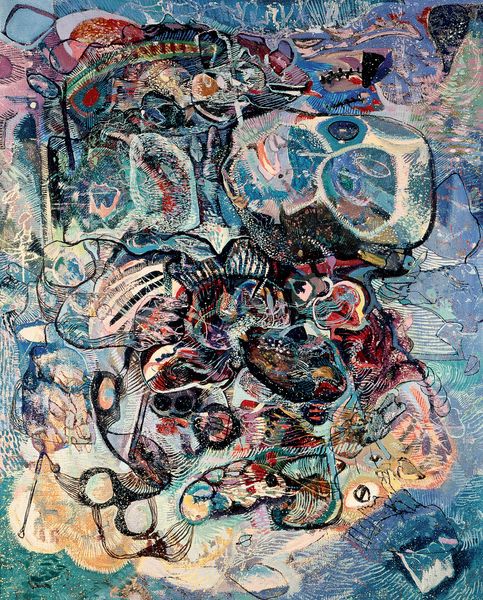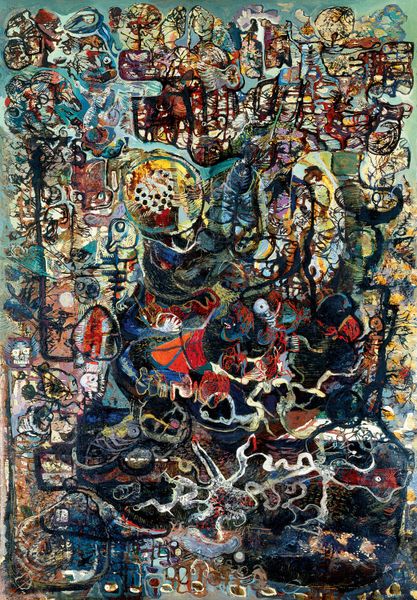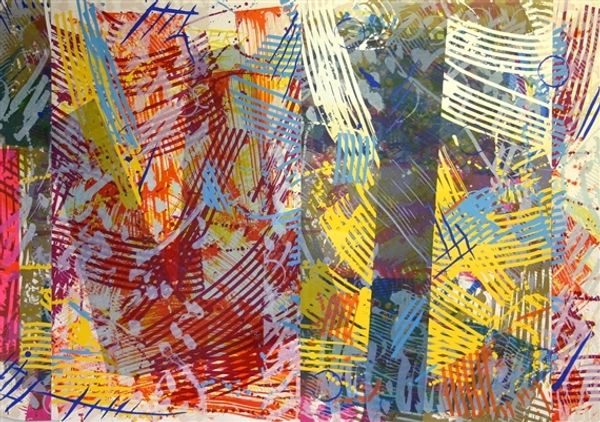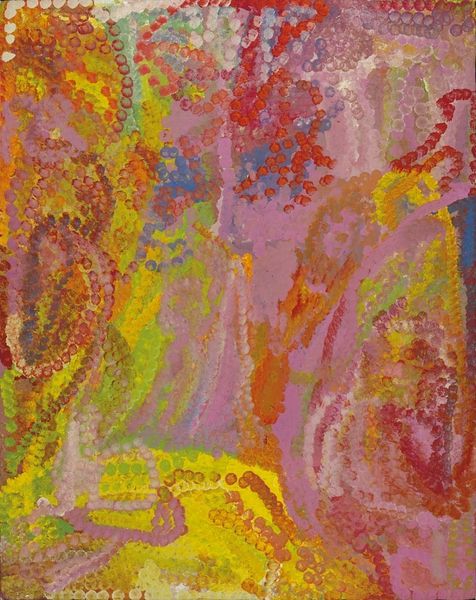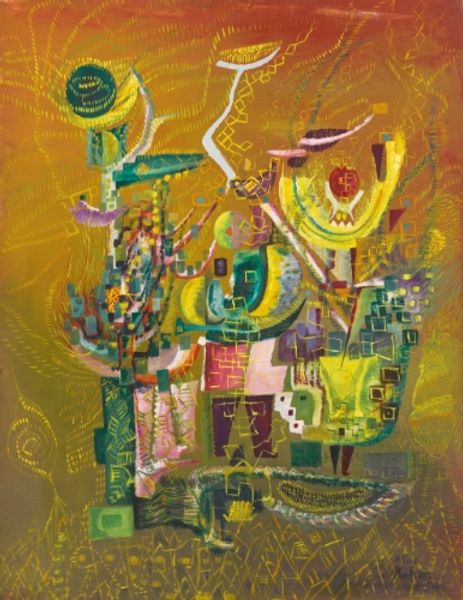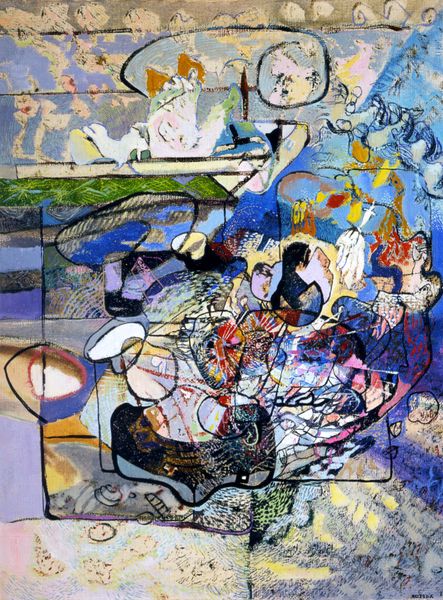
Dimensions: support: 1218 x 1470 mm
Copyright: © Leon Vilaincour | CC-BY-NC-ND 4.0 DEED, Photo: Tate
Curator: Leon Vilaincour's "1804-1995," held here at the Tate, is a large piece, over a meter tall and wide. What strikes you immediately? Editor: Chaos, but a beautiful chaos! It feels like peering into someone's mind, all swirling colors and textures. Curator: Exactly! Vilaincour, active from 1923 onward, employs a frenetic layering technique. Look at the impasto, how he builds up these textures. Editor: It's almost sculptural. I wonder what kind of brushstrokes he was using, or if he used a brush at all! There’s a real energy in the making. Curator: Agreed. The materials speak volumes about post-war artistic experimentation. It challenges the established hierarchies of art production. Editor: For me, it feels deeply personal, like fragments of memory colliding. The gold hints at something precious, perhaps a lost grandeur. Curator: Indeed, Vilaincour seems to be critiquing modes of representation by highlighting the materiality of painting itself. Editor: Ultimately, it's a reminder that even from chaos, beauty can emerge. A wild dance of colors and feelings. Curator: Yes, and a reminder that art is, in itself, labor and materiality combined. Editor: A powerful visual experience.
Comments
Join the conversation
Join millions of artists and users on Artera today and experience the ultimate creative platform.
tate 8 months ago
⋮
Vilaincour was born in Krakow, Poland. He moved to England where he studied art for a short time before volunteering to fight for the British army. He later taught at the Chelsea School of Art and has exhibited many of his paintings in London. This painting combines objects which evoke the artist's own personal memories as well as his research into European history. Two early accordions can be seen in the centre, while to the right are shell-like lamp shades. On the left are uniforms of Napoleon's army and Polish army insignias. Gallery label, September 2004
